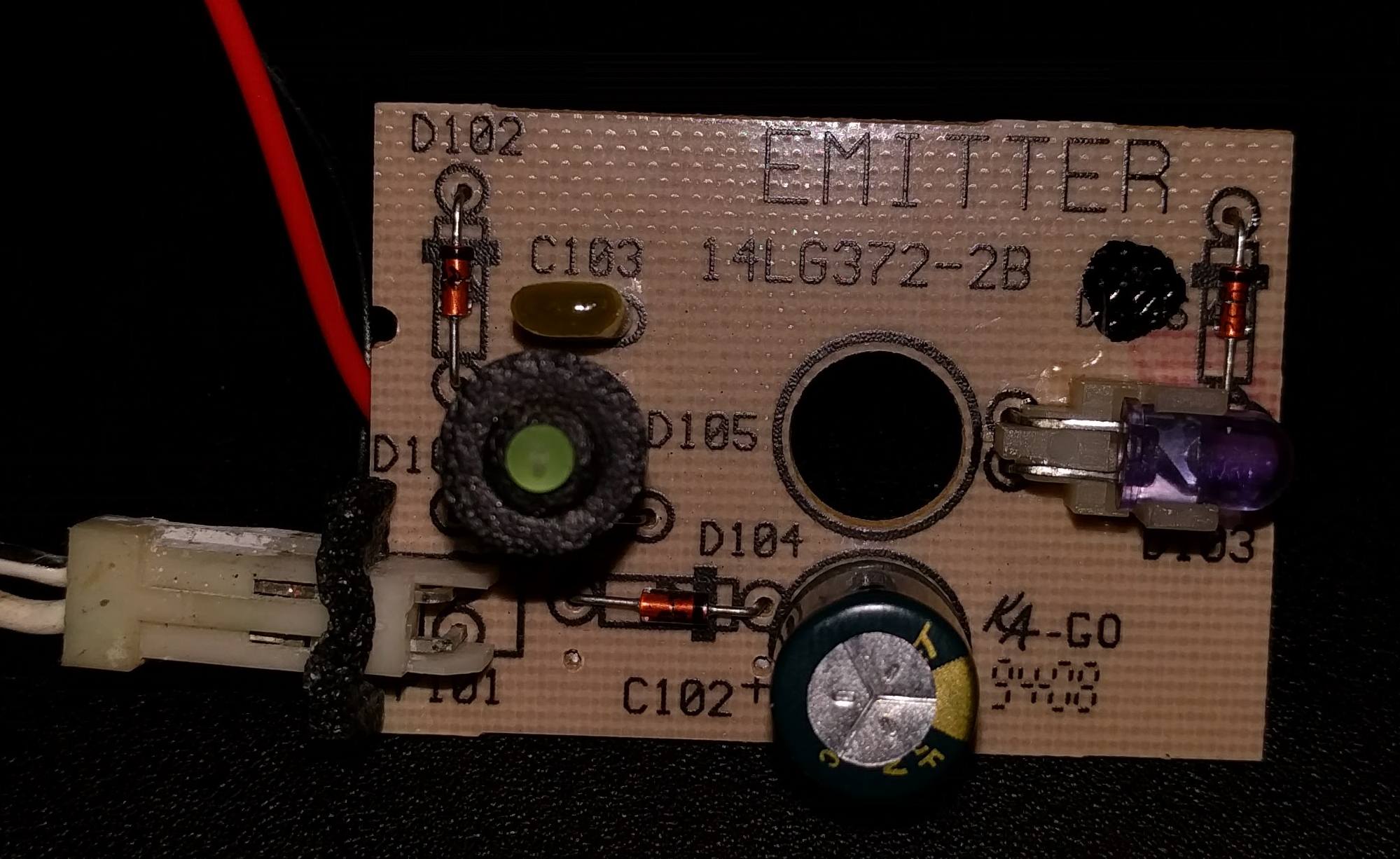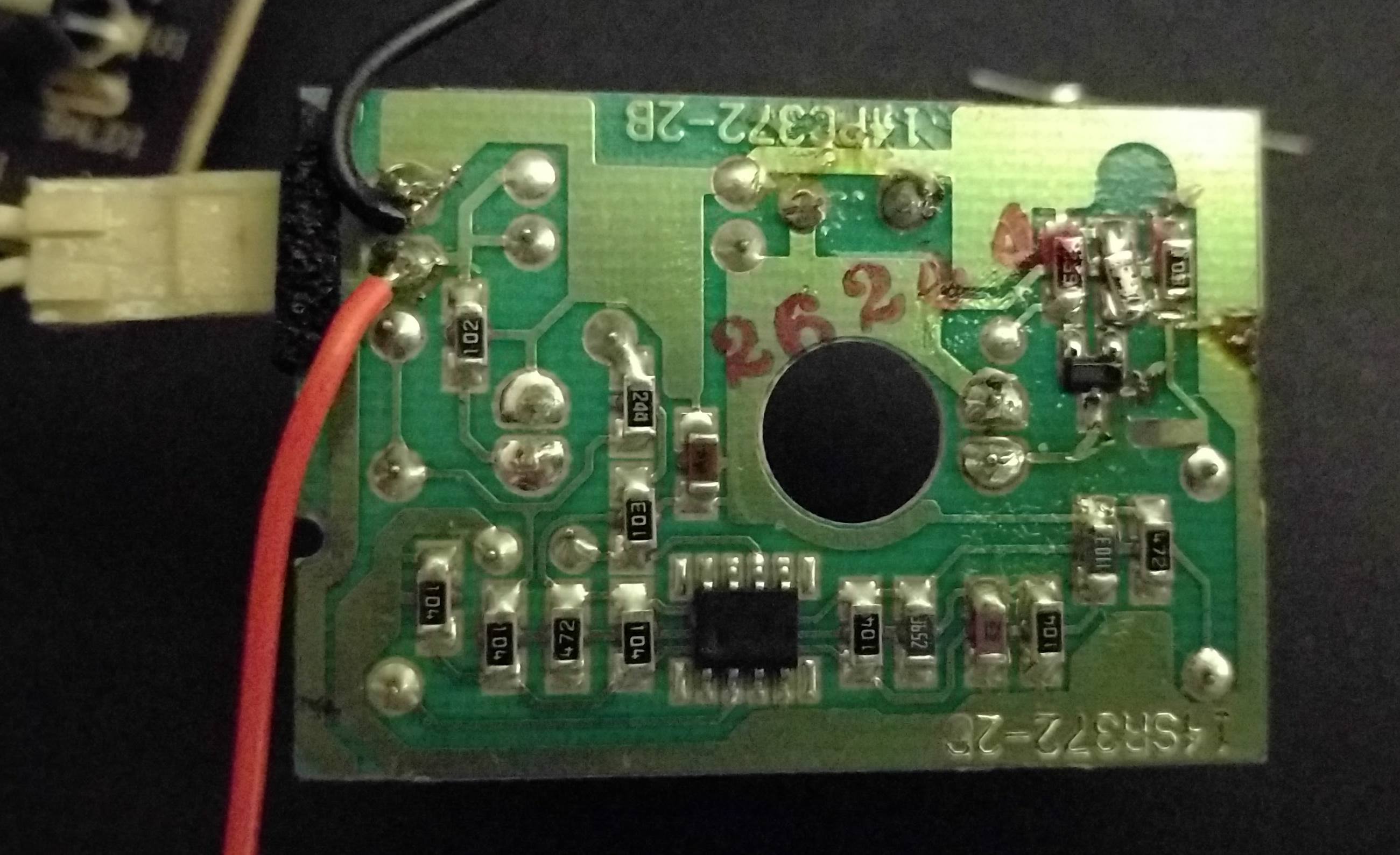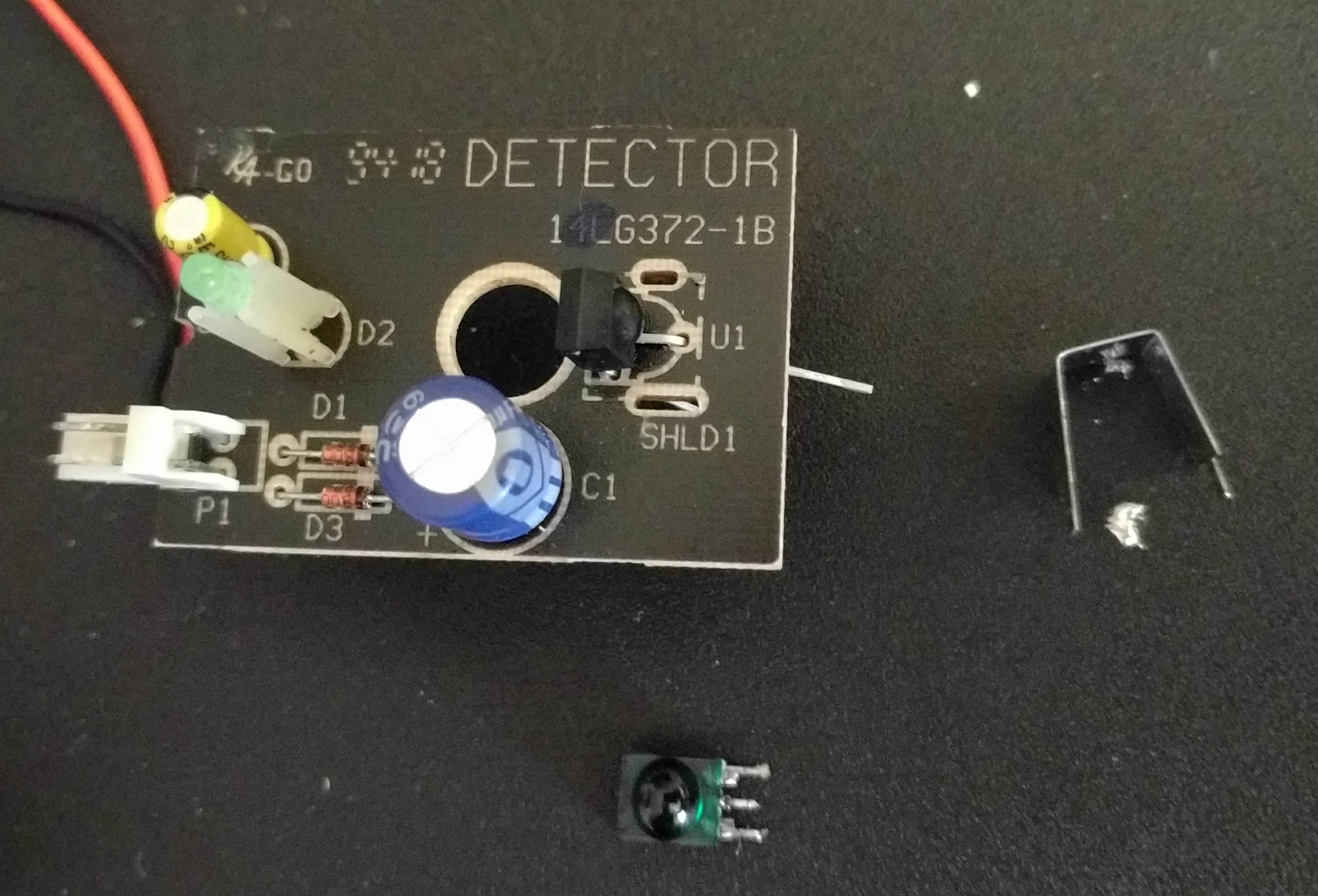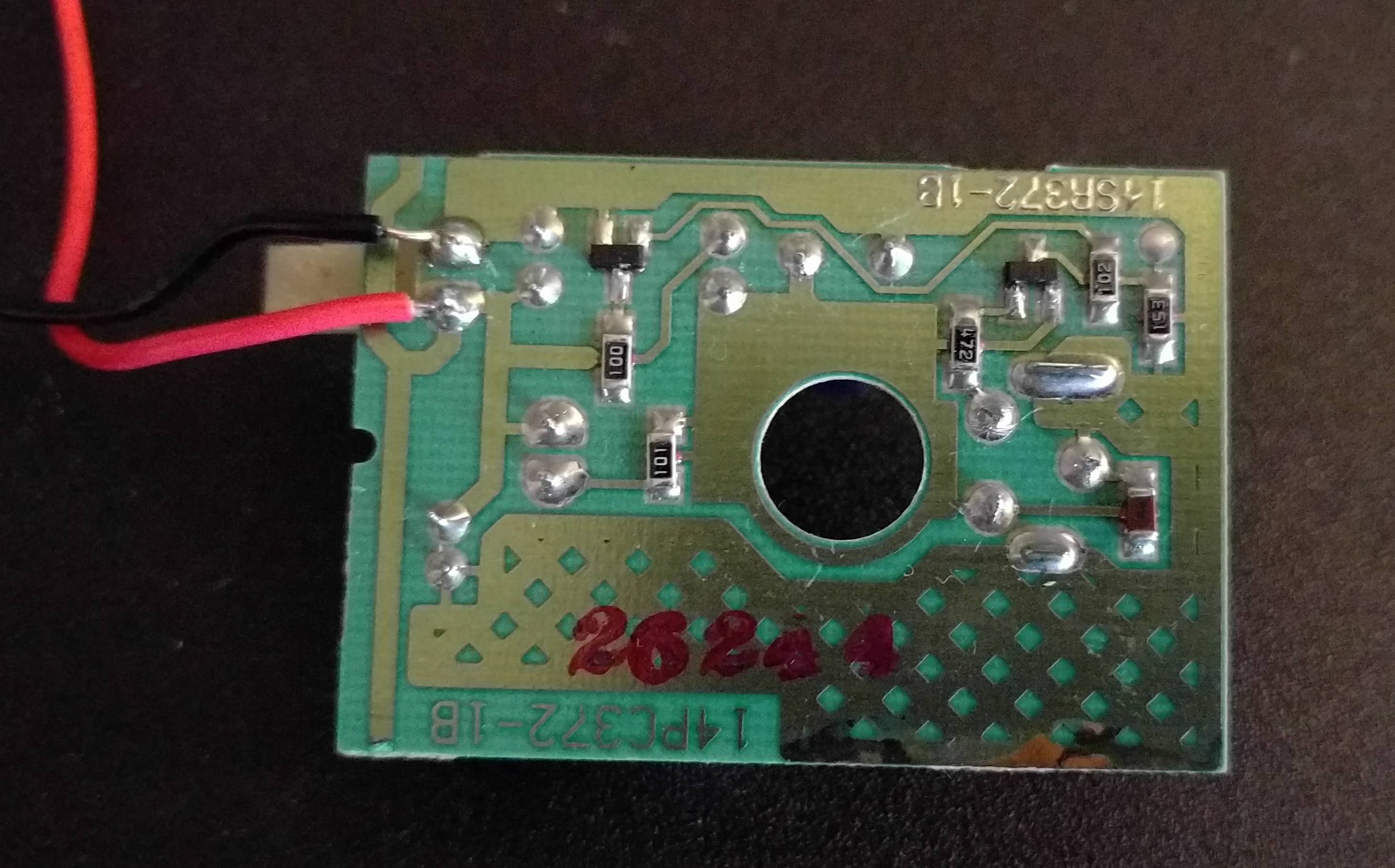How Garage Door Sensors Work
2017
Garage door sensors -- the kind at ground level along the inside of the door -- are connected back to the garage door opener with only two wires which carry both power and data. The transmitter creates ~250us long bursts of 40 kHz infrared light every ~6.66ms using a dual comparator based astable multivibrator circuit. The receiver has a detector that is active low when it detects 40kHz infrared light; when it receives a burst, it shorts together the two lines from the garage door opener. The receiver and detector are able to keep operating through these shorts because there is a diode in series with their power input that is followed by a large electrolytic capacitor. The garage door opener simply watches for missing pulses on the two lines to the sensors to know if an object is blocking the path of the infrared beam.

Simulated Pulse Train
I rented a room from a guy that owned a condo when I first moved to Ann Arbor. Since he bought the place, the garage door wouldn't go down. I figued it was a sensor issue, so I brought the parts up to my room to take a look at them on my scope. The transmitter worked fine -- you could see the IR light using a phone camera -- so I narrowed the problem down to the IR detector. These are nifty little three pin through hole parts that include all the detection circuitry internally and just expose an open drain as an output. I found an equivilent on Digikey, and replaced it along with the electrolytic capacitors on both boards. After soldering in the replacement, the garage door worked without any issues for the rest of the year that I lived in that condo.

Voltage on Control Lines Before Fix

Voltage on Control Lines After Fix
A replacement set of sensors would have cost $30, but I spent more than two hours figuring out what was wrong and fixing it (and $3 in parts). It didn't make financial sense, but I learned something and kept a miniscule amount of waste out of a landfill.
PCB Images

Top of Emitter Board

Bottom of Emitter Board Showing Dual Comparator

Top of Detector Board Showing Old Detector and New Detector to be Soldered

Bottom of Detector Board